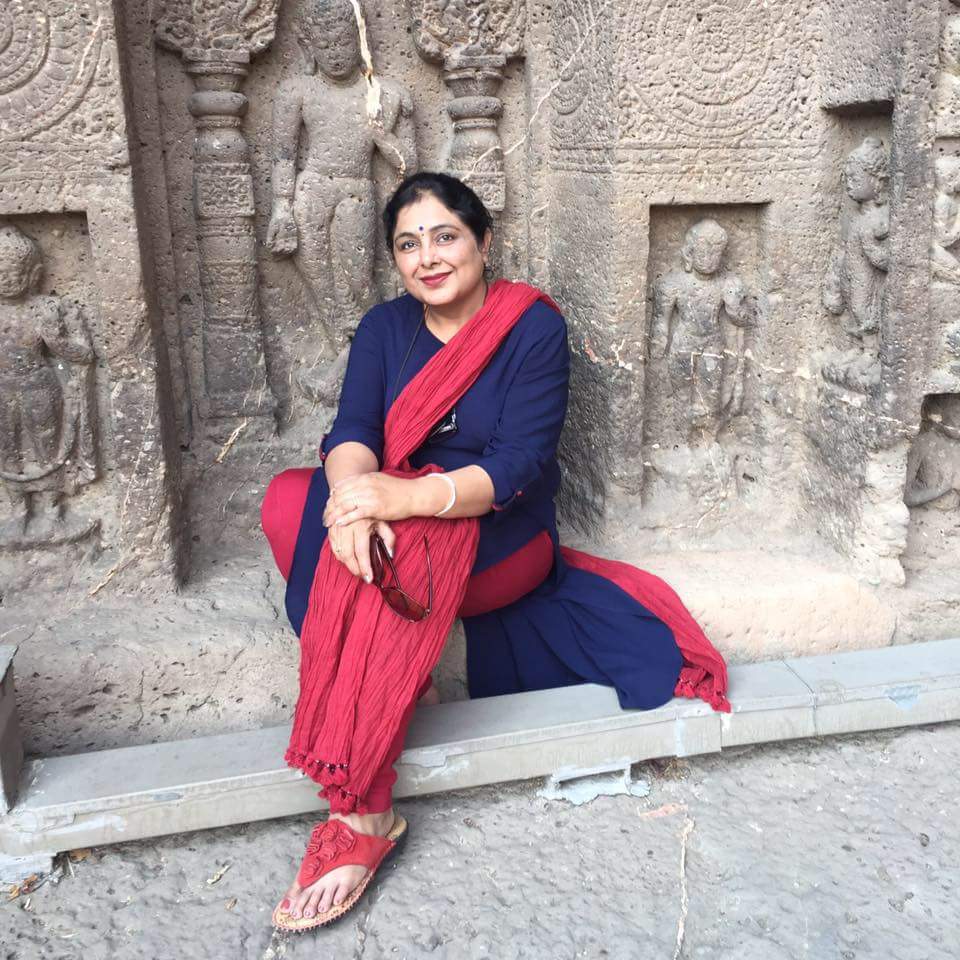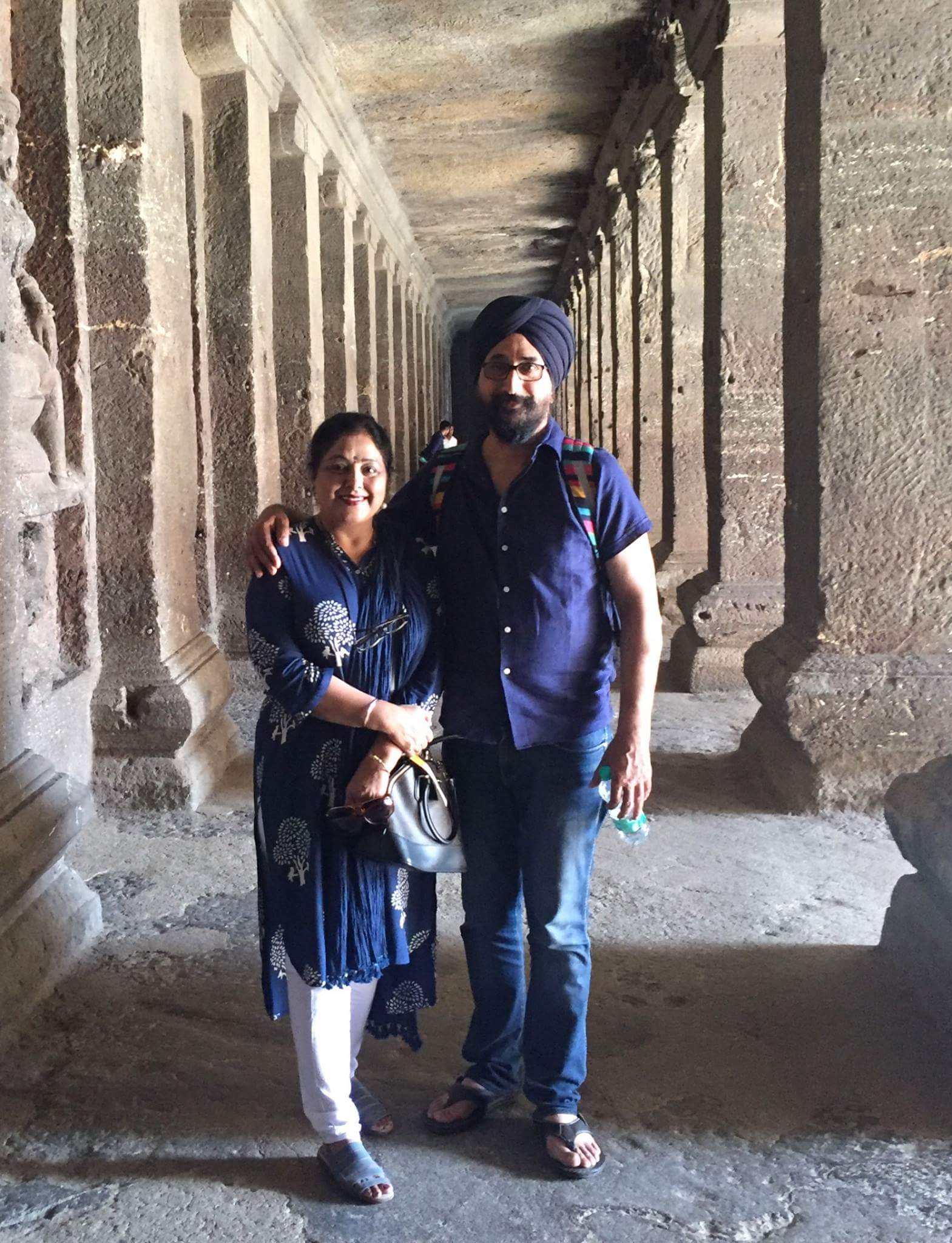 Puneet Sodhi
Puneet Sodhi
Since Time Immemorial
The Ajanta Ellora Caves…Are they Merely Tourist Spots?
In the first quarter of the Nineteenth Century, 1819 AD to be precise, a British army Officer, John Smith, accidently came across the astounding Ajanta caves, while he was on a tiger hunting expedition with his Army mates. Standing on a high cliff looking for a prey, he cited something extraordinary, in fact so astonishing that it has now come to be regarded as the Masterpiece of Buddhist Religious Art by UNESCO and declared as world heritage site. His eyes fell on one of the entrances of around thirty rock cut caves, which had so far been hidden from the view because of the dense vegetation of the jungle where they lay embracing a rich religious heritage for centuries together.
Ajanta caves are located on one side of a stony precipice that is on the northern side of a U- shaped gorge on a small river called Waghur in the Deccan plateau in the Marathwada region of Maharashtra, about sixty five miles from Aurangabad. They attract thousands of tourists from all over the world. But are they merely tourist spots or authentic records of a very advanced theology of that era?
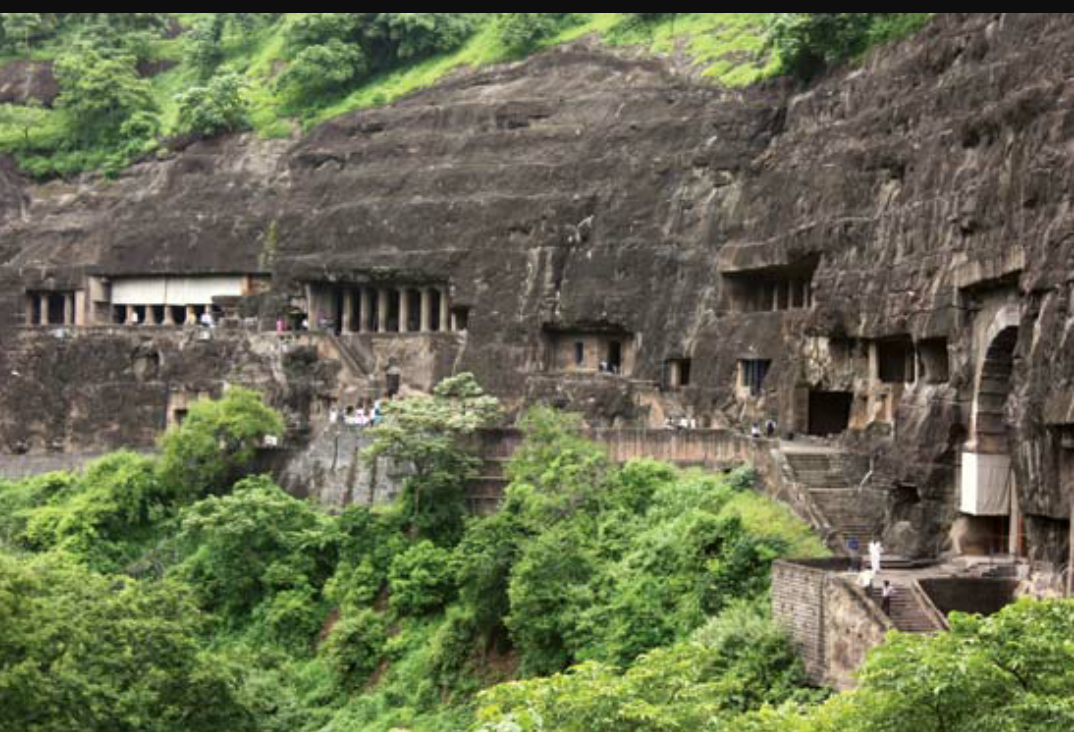
I always had a deep desire to visit these mystic caves and got a chance to go to Aurangabad a couple of years back, fortunately in the company of our Spiritual Master, who made our trip extremely worthwhile through his perspicacity and Spiritual acumen.
Ajanta and Ellora Caves are quite distant from the humdrum of cities even today, after thousands of years of their formation. History tells that they were constructed in two phases, the first one started in the 2nd Century BC by Buddhist monks as they used to take retreat in them in the Monsoon season or during the winters, when they were not able to travel around much. Our Guru Ji told us that these monks must have indulged into the creativity of carving these out of the world sculptures as a Spiritual technique of practicing ‘Mindfulness’ as working with such precision, as is found in their artwork, depicting lifetimes of Buddha with chisels, hammers or colors can take you a long way in perfecting the art of living in advanced ‘Awareness’. The caves are located at a side from the main road, situated among winding hills, waterfalls and walls of thick trees and remain elusive although you reach quite close to their proximity.
Ellora is further sixty two miles from Ajanta and should not be covered in a single day in order to do justice to their majesty and grandeur. As you climb the stone steps at Ajanta, you see a long line of multiple caves. We hired a local guide, who told us that when these caves were excavated for the first time, they were all stuffed with mud and overgrown with bushy trees. It appeared as if somebody had deliberately filled them with sludge. They are incredible for their unparalleled art work which enthralls the onlookers in the form of minutely detailed paintings and stone sculptures, all crafted with superhuman meticulousness. It is surprising then, why they were kept hidden?
Our Guru, Saint Sukh Sagar Ji explained that these caves must have been formed as pieces of what he referred to as ‘Objective Art,’ not for the others but for the monks, who created them for themselves. By ‘Objective Art’, I understood that the carvings and paintings were not made by obsessive people, implying that they were carved to achieve the highest form of ‘Ananda’- the bliss only as a meditative activity. They just enjoyed this ‘divine’ game of creativity. Many of the caves are incomplete. They could have been completed if the monks had so desired. After all, they must haveworked as huge teams; this humongous work cannot be the handiwork of few artisans. Maybe their purpose was to create as much as they wanted to…a very high stage in Spirituality…when the artist is creating not to ‘finish’, but to enjoy the course of doing …the dancer is dancing not for an audience but for the accomplishment of the self….They must have created these masterpieces when their exuberance was at its peak and that climax in their Spiritual experience did not demand any appreciation from the outside world. It must have been the explosion of their spiritually spirited pinnacle.
Probably it was just a game for them to create as much as they desired, and when that desire was consummated, they left their work unfinished to move to the next stage of divinity. Had they been obsessive with their creation, they would have delegated others to complete their unfinished work. Going by the intense vibrations of the milieu, I could feel that completion was not the objective of those Bhikshus–the Buddhist seekers, indicating a higher level of perception and purpose associated with those art forms.
The overwhelming vibes of the place cannot be missed. Each and every part of the caves is mesmerizing. I repeat that it is not a tourist place…it is a spot where you just go and feel the ‘Oneness’ with the Universe by sitting inside or outside, wherever you wish to and get immersed into the Aura which, like a strong magnet just takes you in and is ready to unfold the untold mysteries if you are ready to surrender yourself completely!
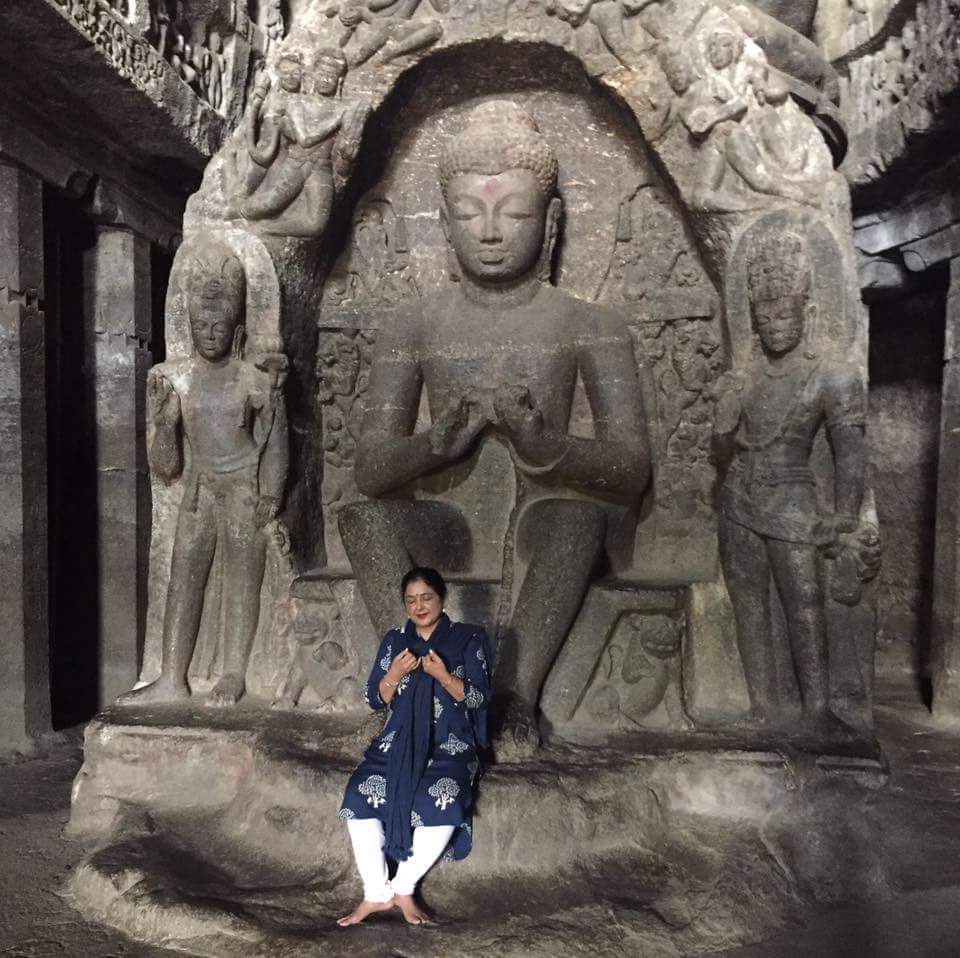
The artists could not have been ordinary people…the expressions on the paintings or the sculptures or the symbols attached with every single carving are a complete lesson in Spirituality. There is a singular pious fragrance attached to every single corner of each cave. You cannot just click pictures of the surroundings to move on to the next compartment without being enthused with its splendor or without sensing the higher rationale of why they were created.
In one of the early caves, I remember a painting showing the new born Buddha taking seven steps. The local guide said that infant Buddha was not an ordinary baby and that is why he took seven steps immediately after he was born. Our Guru offered its interpretation in a totally different manner. Those, who are into the field of mysticism, will definitely understand this explanation. There are different planes or levels of our existence in this universe. When Buddha was born, he was already at the Seventh plane of his existence; hence symbolically that painting depicts him to be seven steps ahead of the common humanity. How could an artist, unaware of this ‘knowledge’ compose this painting? The monks, who could show this kind of conception through their work, were certainly a group of achieved souls.
In one of the caves, we came across some pillars, which were made of very porous stone. If you touched them with your hands, they produced a melody, again matchless in its quality to soothe your entire being. Those columns or pillars burst into the softest of musical notes even when touched by breeze. The experience was exhilarating…tender…and highly elevating. I wonder, if my words can ever justify the ‘Unspeakable ’calm of the vicinity!
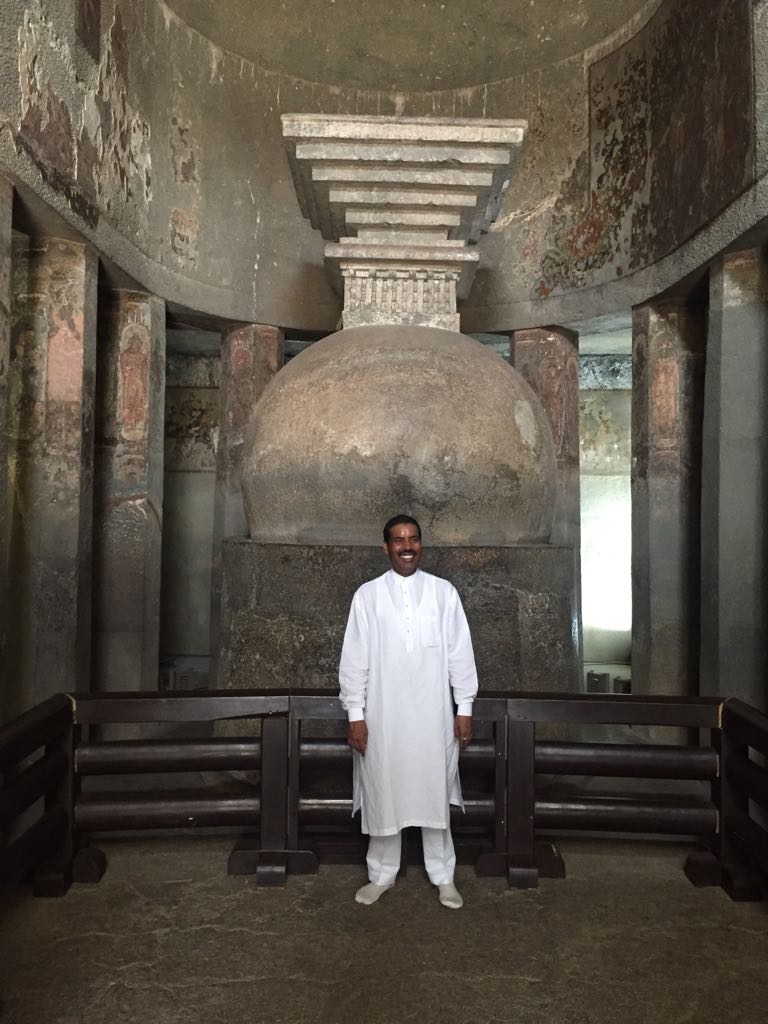
As you move forward into this numinous environment, a marvelous statue shows Buddha lying, just before he died. It is a long sculpture. Sitting by its side, when your body and mind become silent, you can even today feel how Buddha must have renounced his physical body to become one with the Higher Energy. Breathing there, helps you to grow spiritually- to flow with the Universe- to reunite with your innate self, which though never was lost actually, yet kept you in a big delusion that you were lost!
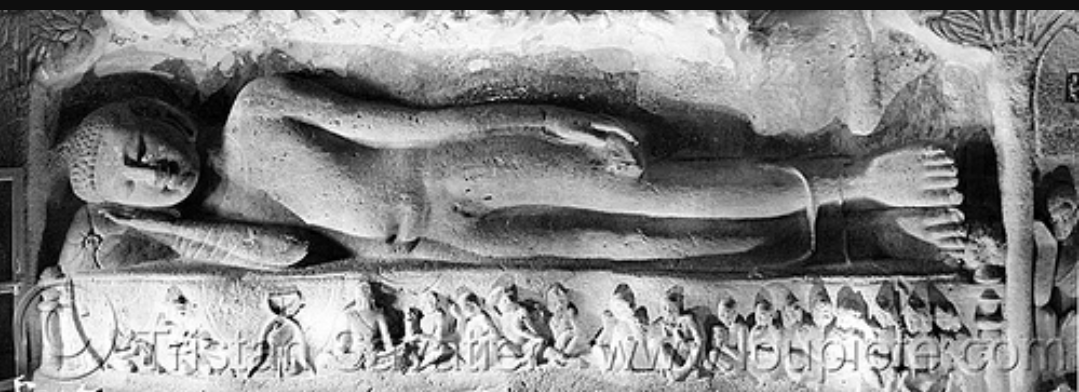
Almost each cave has a hall apparently for mass meditation and smaller units for individual meditation. Years of mass meditation rebounds in each stone and echoes in every pillar. There is no provision of electricity even today and light is supplied by placing mirrors at certain angles to reflect the Sunlight. In the evening, the caves are closed to the visitors as well as the seekers. Not surprising, this place is visited by thousands of people from all over the world to simply admire the art work or to mingle with the waves of the endless ocean, which invites one to take a plunge!
In the company of our Guru, which helped us to shed many superficial layers of our worldly garbs, we sat in the silence of the little domes which are in abundance there. The serenity is striking, the sound of the stillness is captivating and you slide into meditative state effortlessly… your body passes into nothingness, energy levels mount high and the ringing sound of the Universe surrounds you. You actually feel the Celestial rain all over the place. It is all an extremely sublime experience to sit and meditate in those vibes, where the monks must have meditated for hours, days, months and years together. The transcendental atmosphere envelops you with a mysterious hum strong enough to transport you into an advanced level of ‘Being’.
These caves offer you the amazing experience that you are one with the cosmos…or the cosmos is one with you…animate as well as the inanimate objects pulsate with the same energy and there are no ‘Two’. There is no differentiation between the ‘living’ and the ‘non living’ except for the level of active consciousness, and that too keeps evolving at its own speed in either case, as our Revered Guru elucidated.
My journey to these caves reinforced my belief that since times immemorial, the whole creation is striving to come back to its Mool, or the Base, to achieve that state of Mind, where it is not vacillated by uncontrolled thoughts, emotions or tossed up and down by waves of joys or sorrows of human existence; and to attain the ‘Divine Stillness’ as well as the ‘Ultimate Tranquility’ which are the characteristics of its Root…its Maker…if at all the Creator and the Creation are ‘separate’!
© 2017 Puneet Sodhi
My heartfelt gratitude to Saint Sukh Sagar Ji, who initiated in me the urge to ‘know’ my Roots, special thanks to my friend Allan Beveridge, who has always been motivating me to walk along this beautiful path, and my husband Amarbir, who has made this journey amazing by always being on my side!
Saint Sukh Sagar Ji
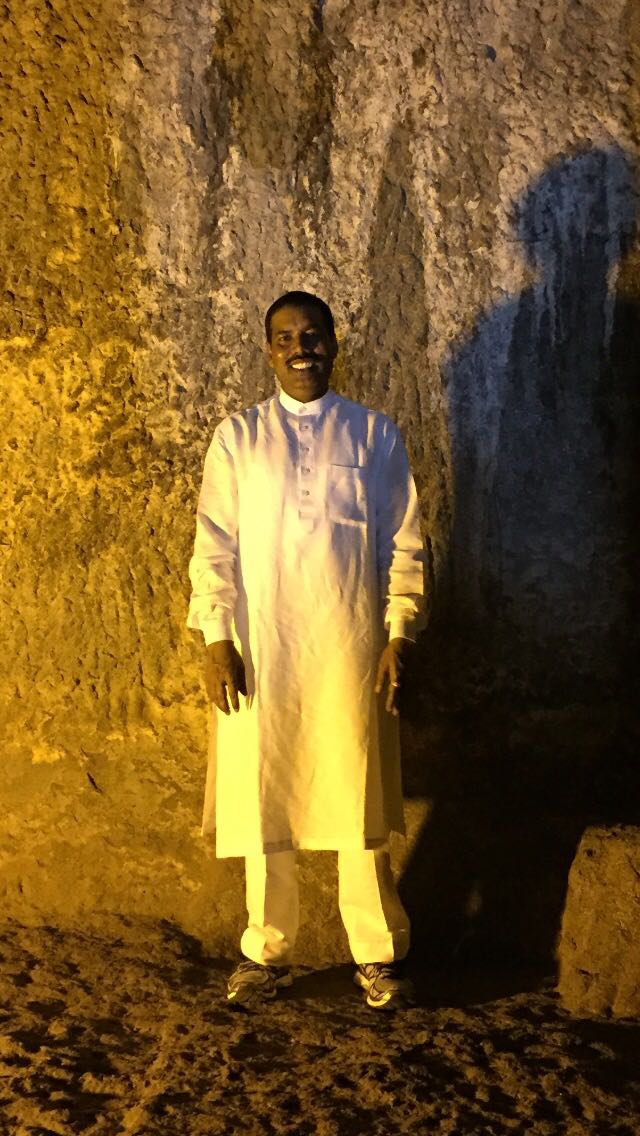
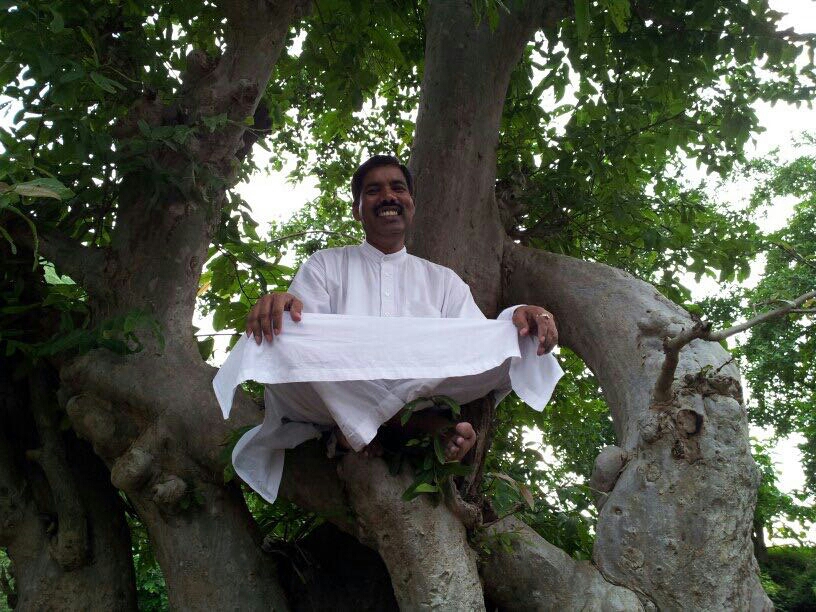
Puneet and Amarbir
